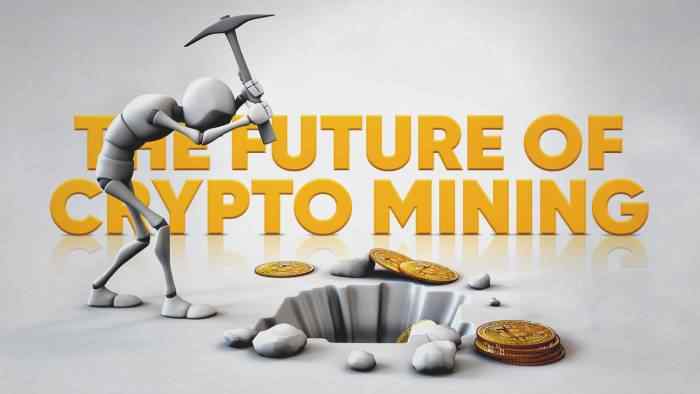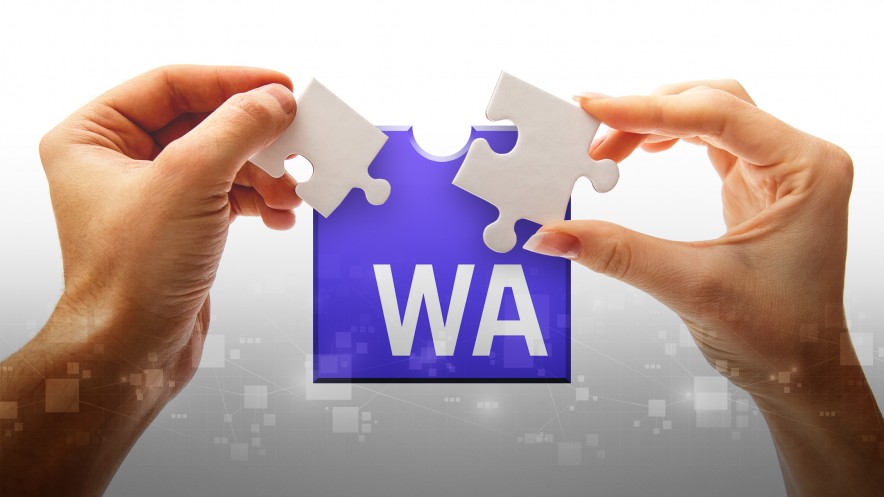The Future of Crypto Mining: Can the Little Guy Still Turn a Profit?
Jun 21, 2018, 1:41am
Mining may not be as profitable as it once was, but by making informed decisions, it's still possible for the average person to earn from it.
Since Bitcoin’s inception in 2008, crypto mining has become a “gold rush” in which some people profit, while others don’t. In the face of powerful ASIC miners and large-scale mining centers, it is hotly debated whether mining remains a viable way of acquiring cryptocurrency, and, if so, what the most feasible means of mining is.
Is Any Algorithm ASIC-Resistant?
The process of finding valid blocks and coins is called “mining” because each miner’s computer works through cryptographic problems until it discovers a valid block — much like if you were sifting through a riverbed to look for gold.
Cryptocurrency developers adopt cryptographic algorithms that they believe will be resistant to specialized hardware and remain mineable for a long time. Meanwhile, ASICs are developed — hyperefficient devices that are specialized for mining on specific algorithms.
New algorithms are continuously developed to be resistant to ASIC devices, while new ASIC devices are designed to efficiently mine on those algorithms — effectively pitting the two against each other in an arms race.
Since Bitcoin, several competing algorithms have emerged, each with the goal of ASIC-resistance. Here are a few:
- SHA-256: An older algorithm used by many coins, including Bitcoin. SHA-256 was once profitable on all devices, but it is now only practical to mine on if you own a specialized (ASIC) device…and even then, mining Bitcoin itself is not profitable.
- X11: An energy-efficient algorithm used by Dash that saves electricity costs; it attempted ASIC-resistance by including 11 different algorithms, which failed
- Scrypt: A fast and low-energy algorithm used by Litecoin; it is also memory-heavy, which was intended to prohibit ASIC mining, although this is no longer the case
- Equihash: An algorithm used by Zcoin and Zcash which is quickly falling victim to ASIC mining
Some algorithms are still minable on non-specialized hardware due to constant modifications:
- Cryptonight: An algorithm used by Monero that is feasible for low-end devices (including CPUs) to mine on due to continuous updates that work against ASIC miners
- Ethash: An algorithm used by Ethereum that attempts to be ASIC-resistant; ASIC miners have been created, but there are plans to interfere with ASIC ETH mining
Does Specialized Hardware Really Matter?
So why not invest in an ASIC miner? Well, ASIC devices are expensive and eventually become obsolete as they become more commonplace, which drives down the value of coins.
If you haven’t invested in specialized hardware, your computer will have either a CPU or GPU. A powerful desktop computer with a GPU will almost certainly mine a few times faster than a low-end laptop with a CPU. But, as noted, some algorithms (such Cryptonight and Ethash) are updated in such a way that nobody has an extreme benefit over the most basic miners.
The bottom line for miners on consumer-grade computers is this: your hardware’s power is not solely important. Though a powerful GPU is desirable, it is equally important that other miners aren’t more powerful than you.
In other words, it is important that your competition is mining at a rate comparable to your own. That is where mining pools come in.
Joining A Mining Pool
When you mine alone, your chance of finding a block is somewhat hampered. Even when you are mining coins for which specialized mining hardware doesn’t exist, you simply may not be able to keep up with other miners collectively. Other miners simply have more equipment than you.
Joining a pool will allow you to find valid blocks more predictably. You and several other miners will mine independently, and when one of you finds a valid block, it will be reported to the pool and the rewards will be distributed fairly.
There are a few features to look for in a mining pool:
- Reward schemes: Different ways of dividing pool earnings, some of which will be more profitable than others depending on your mining habits.
- Varying difficulty level (or vardiff): Different sub-pools that are best suited to your class of device.
- Payout threshold: The minimum you must earn before a pool pays out.
Participating in a pool makes it less likely that you’ll mine with no outcome. Nevertheless, you will have to remain somewhat dedicated to the pool, as pools will take precautions to prevent pool-hopping and freeloading. You also take on a small risk, as pools are sometimes targeted by hackers.
What About Proof-of-Stake Mining?
So far, this article has discussed proof-of-work mining. If your mining hardware simply doesn’t measure up, proof-of-stake mining is an alternative. Your computing power doesn’t enter into proof-of-stake — instead, the more of a coin you own, the better your chances of validating a new block are.
Proof of stake mining may seem attractive since it means that you own the very cryptocurrency that you intend to obtain — there’s no need to own expensive hardware that will soon wear out or become obsolete. You simply need to hold a special staking wallet and some of the coins in question. Ethereum, for one, has plans to switch to proof-of-stake.
Unfortunately, proof-of-stake mining still allows wealthy entities to acquire large quantities of a coin:
PoS is an equity proof mechanism. However, PoS creates a system where the “rich get richer” as parties with more equity have a higher chance to produce the next block in the Blockchain and earn the rewards that come with it.
It is unlikely that you’ll own enough of a coin to make a profit by mining independently. But, as before, it is possible to overcome these obstacles by joining a staking pool.
Is Cloud Mining a Real Shortcut?
Cloud mining, in which you pay a hardware owner to mine on your behalf, is subject to much suspicion within the crypto community. Cloud mining is attractive because you don’t have to invest in hardware or electricity costs. Unlike mining pools, which only take fees as you mine, cloud mining providers typically require you to pay upfront.
Unlike in mining pools, in cloud mining, there is no way to know for sure if your mining rate is reported accurately. There may be no actual mining occurring, and users may simply be paid from the money that other users have paid.
In other words, a cloud mining service may be a Ponzi scheme and will pay out until the day it doesn’t. Sometimes, these services operate in a grey area — some services may not be outright scams but may change their policies in ways that make payouts difficult.
If you do use a cloud mining service, look for those with short, logical contracts, so that you can withdraw your earnings early and often.
In Conclusion: Choosing a Coin to Mine
Armed with this knowledge, how can you tell if mining will actually be profitable or not for you? You can use comparison sites such as WhatToMine, which also has a calculator function, and allow you to take into consideration some of the variables discussed above:
- Your hardware
- The coin’s algorithm
- Electricity costs
- Pool features
- A coin’s value
The bottom line is that crypto mining is not totally dominated by the overpowerful — however, it is far from a get-rich-quick scheme. It is possible that you will make only a negligible profit — as such, it’s vital to take into account all of the variables before beginning to mine.





